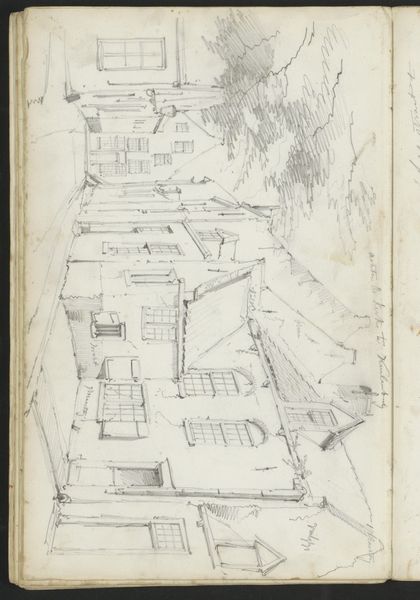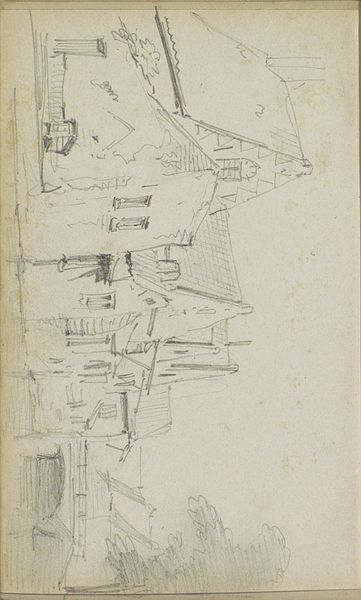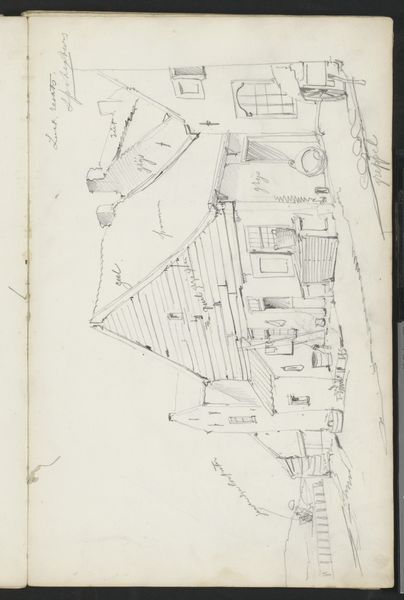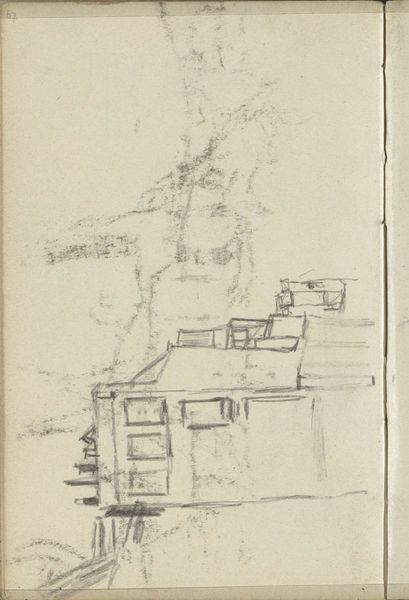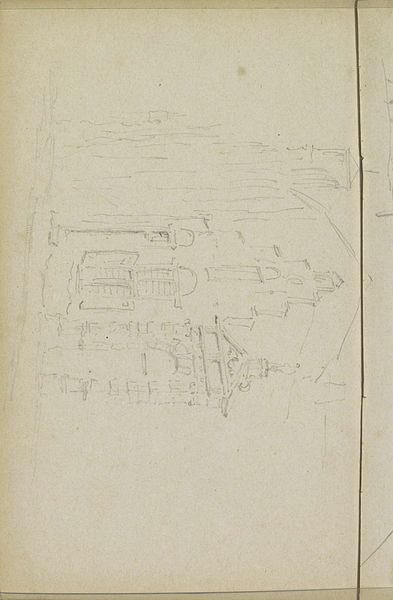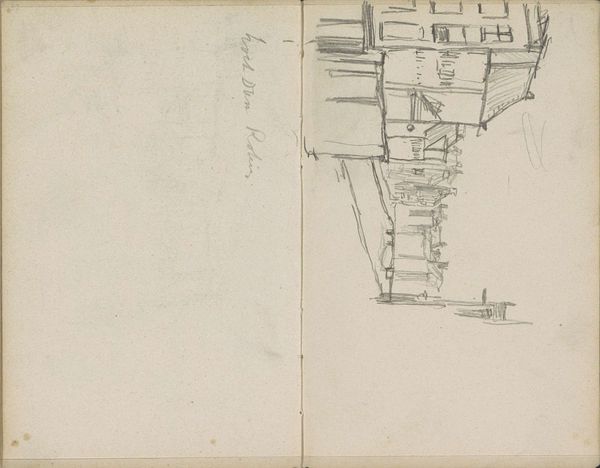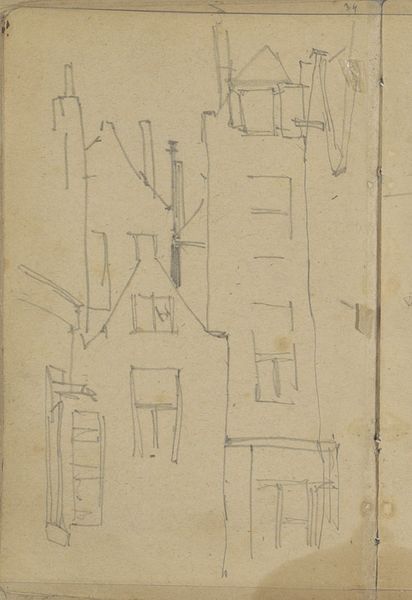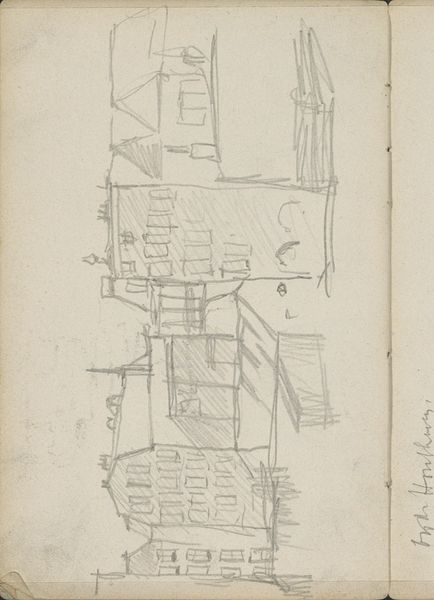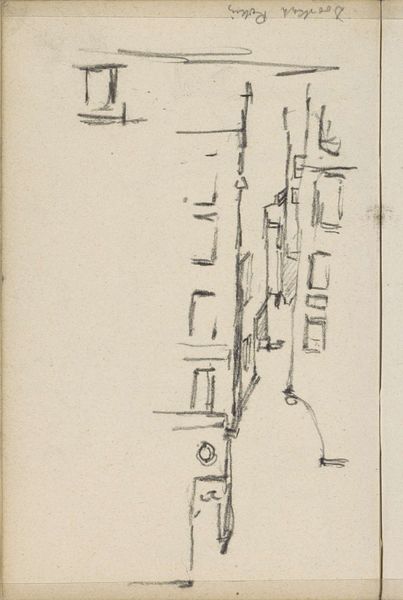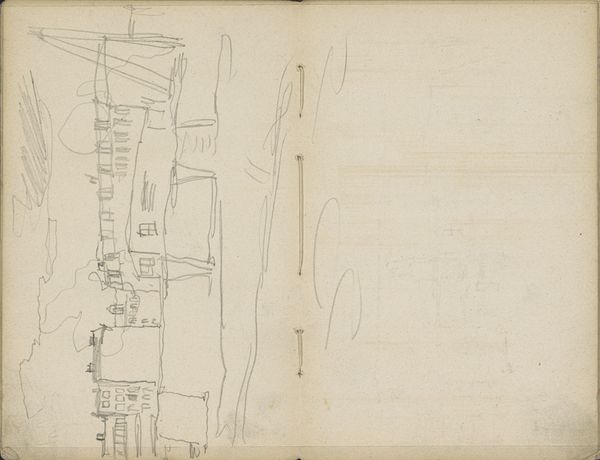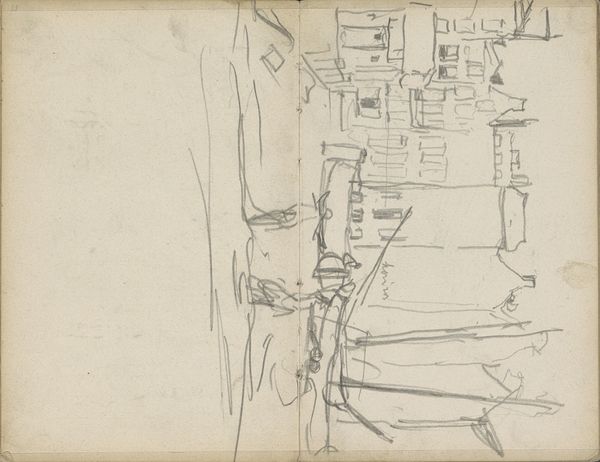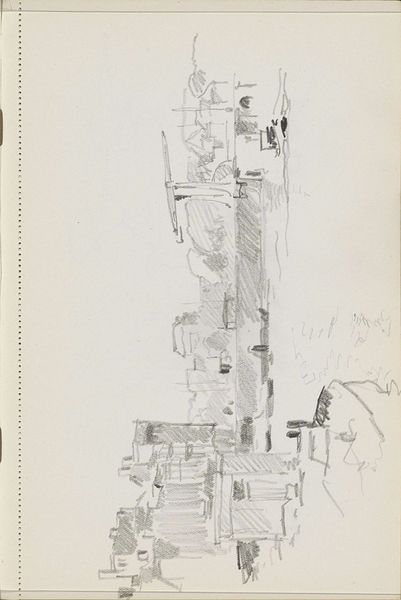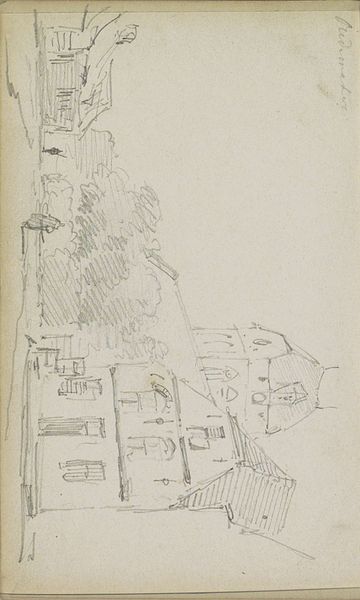
Copyright: Rijks Museum: Open Domain
Editor: This is a drawing by George Hendrik Breitner, circa 1903, titled 'Gezicht op gebouwen aan het Damrak te Amsterdam'— or 'View of buildings on the Damrak in Amsterdam' done with pencil. The sketch feels unfinished and raw, and I'm intrigued by that. What compositional elements stand out to you? Curator: Observe the relationship between line and negative space. Note how the sparse pencil strokes define the architectural forms. The artist uses the absence of detail as a conscious choice, challenging the viewer to complete the image. This economy of means draws attention to the structure itself. Do you perceive any repetition or rhythm in the linear elements? Editor: I notice the repetition of rectangular shapes, especially in the windows, and the vertical lines emphasizing the height of the buildings. What is the effect of the sketchwork? Curator: Precisely. And this repetition underscores the uniformity, the almost industrial aesthetic of the urban landscape, but, through its gestural form, allows the viewer to feel the pulse of the city. Consider also how the medium, pencil on paper, dictates the artwork's character, imbuing it with immediacy and a sense of ephemerality. How does the toned paper work within the formal aspects? Editor: It adds a sense of age, like looking at an artifact. It softens the contrasts, giving it an impressionistic air, even though it's a sketch. I see the toned paper almost as another formal aspect and not merely a support element. Curator: Yes, quite right. Its very tonality influences our reception, transforming it from a simple study to a meditation on memory and urban evolution. This sketch shows the fundamental qualities of architecture via color, texture, line, and form, independent of anything else. Editor: This was very insightful. I’ve begun to notice the aesthetic quality this particular use of structure presents through lines. Curator: Yes. And I understand Breitner's use of the material to reveal a story of city structures and memories in a new way.
Comments
No comments
Be the first to comment and join the conversation on the ultimate creative platform.

